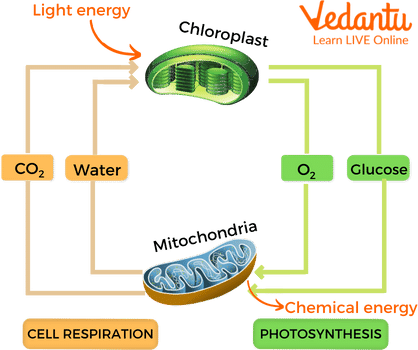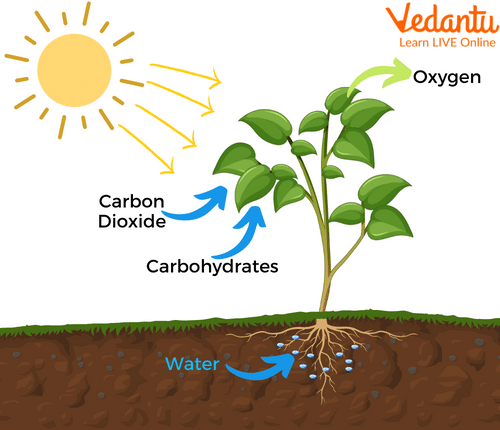




How Photosynthesis and Respiration Work Together in Plants
All living things, including plants, people, and animals, rely on the cycle of photosynthesis and respiration to survive. Animals and people breathe in oxygen that plants create during the photosynthesis process. Oxygen is then carried by the blood to the cells where it is used for respiration, and carbon dioxide created during the respiration process is released from people or other animals and taken up by plants to help them get the energy they need for growth. This never-ending cycle is what typically keeps life on earth going.
The Explanation for Photosynthesis and Respiration
The two processes that produce each other are photosynthesis and cellular respiration.
The products of one system are the reactants of the other because of the way that photosynthesis and cellular respiration are related. In order to create glucose and oxygen, photosynthesis uses the energy from sunlight, water, and carbon dioxide. Oxygen and glucose are used in cellular respiration to create carbon dioxide and water. The equation for photosynthesis is the inverse of the equation for cellular respiration.
The cycle of cellular respiration and photosynthesis is essential for the survival of humans, animals, and plants. Humans and other animals breathe in oxygen that plants make during photosynthesis so that the blood may carry it to the cells where it is used for respiration. Plants absorb the carbon dioxide that is emitted from the body during respiration and use it to assist fuel their growth and development.

Relationship Between Photosynthesis and Respiration
Plants and other photosynthetic creatures produce energy through the process of photosynthesis, whereas cells use the energy through the process of cellular respiration. There are several commonalities between these two processes notwithstanding their variances. For instance, the energy currency, ATP, is produced and used in both processes.
Respiration is a Chemical Change
As carbon dioxide and water are produced, respiration is a chemical change. Additionally, the mass changes as oxygen oxidize the glucose, and heat is generated. This change is permanent. This evidence suggests that breathing involves a chemical change. Thus, respiration is a chemical change.
Photosynthesis is a Chemical Process
Plants use the process of photosynthesis to transform light energy into chemical energy. The chemical reaction that takes place is the synthesis of glucose and oxygen from water and carbon dioxide. It is obvious that photosynthesis involves a chemical shift since new chemical reactions occur. Thus, photosynthesis is also a chemical process.

Process of Photosynthesis
Similarities Between Photosynthesis and Respiration
Both processes involve the production of energy.
Both processes involve the exchange of gases.
Both activities occur in the organelle of the cell, which was once thought to be an endosymbiotic creature.
Both involve an electron transport chain and a reduction-oxidation process.
Both procedures produce and make use of ATP.
Children can practice photosynthesis and respiration worksheets for a better understanding of the topic.
Summary
The balance of oxygen and carbon dioxide is maintained through the cycle of photosynthesis and respiration. The oxygen needed to replace that lost by living things during respiration is produced by photosynthesis. One of the reactants that plants need to carry out photosynthesis is carbon dioxide, which is produced during respiration.
There is a beneficial relationship between photosynthesis and cellular respiration. Without photosynthesis, cellular respiration cannot take place, and photosynthesis cannot take place without the assistance of the former.
FAQs on Relationship Between Photosynthesis and Respiration
1. What is the difference between photosynthesis and respiration?
Respiration occurs continuously, photosynthesis only occurs in the presence of sunshine. Additionally, photosynthesis releases oxygen while respiration utilizes it. Algae, plants, and photosynthetic bacteria all participate in photosynthesis, and all living things participate in respiration.
All living things breathe, it's a universal process. Consequently, it is a process that changes oxygen and glucose into carbon dioxide and water, producing energy for your body's cells in the process. On the other hand, chlorophyll-containing green plants engage in photosynthesis. They employ water and sunlight to transform the energy during this process.
2. Why are photosynthesis and respiration important?
Biochemical processes like photosynthesis and cellular respiration transport matter and energy across the biosphere. The exchange of oxygen and carbon dioxide between living things and their surroundings is brought on by these two processes. Both photosynthesis and respiration are essential for the growth, development, and survival of plants. Plants respire just like all other living things do in order to maintain life and carry out essential life processes in their cells.
Whereas, photosynthesis is yet another distinctive mechanism for plants. They are autotrophs because they produce their own food through this process. Therefore, photosynthesis plays a crucial role in the growth and development of plants.





















